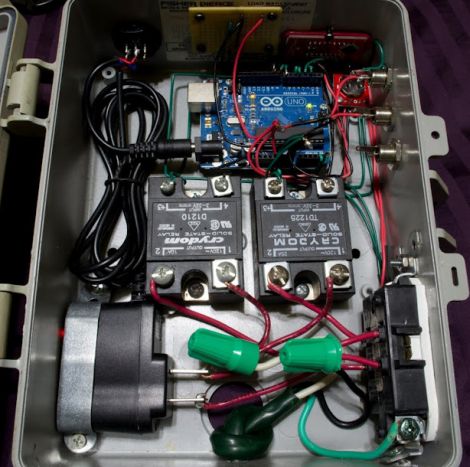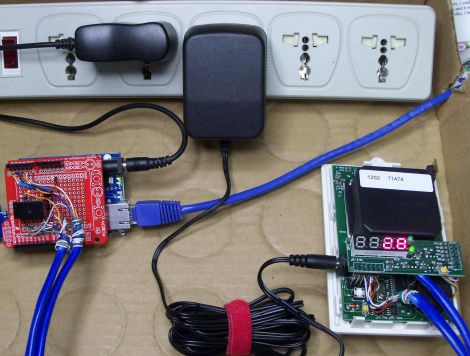
Archiving data from old floppy disks can be a tedious process at best. Poorly labeled disks combined with slow transfer speeds put it high on the list of things we would rather not do, and it turns out that [Dweller] was of the same opinion. With an estimated 5,000 floppies in his collection, he finally decided it was time to clean house.
With no idea of what was stored where, he decided the best way to go about the process was to read all of the disks, archiving everything, saving the sorting process for later. He originally started by building a floppy autoloader out of Lego Mindstorm parts, which looked good on paper, but performed pretty poorly.
He came across an old floppy duplicator on eBay and figured that since the machine was built for handling gobs of disks, that it was the perfect base for his autoloader. He pulled the mechanical bits from the machine, incorporating them into the rig you see above. He swapped out the duplicator’s brains for an Arduino, which allows him to batch copy his disks and save a picture of each label with little effort.
He says that the system works great, making his life a lot easier (and less cluttered!)
Check out the video below to see his floppy autoloader in action.
Continue reading “Floppy Autoloader Takes The Pain Out Of Archiving 5000 Amiga Disks”
















